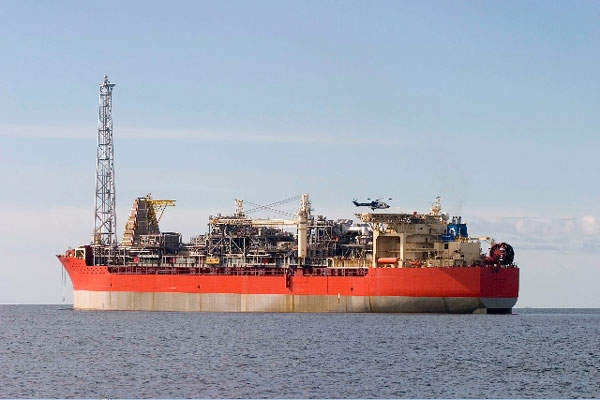The White Rose field is located at a water depth of 120m, approximately 50km from both the Terra Nova and Hibernia fields, and 350km east of Newfoundland, Canada.
The field is operated by Cenovus Energy (Cenovus), which assumed the operatorship after it acquired the previous operator Husky Energy (Husky) in January 2021. Following a restructuring in September of the same year, Cenovus reduced its interest in the field from 72.5% to 60%. Suncor holds the remaining 40% interest in the field.
Total capital costs of the field development were approximately $2.35bn.
The White Rose field produced 261 million barrels of oil (mbo) and 387,181 million metric standard cubic feet (Mmscf) between November 2005 and April 2022.
Oil and gas reservoir
The area consists of several oil and gas pools in the Avalon formation sandstones, which were deposited during the early Cretaceous along a north-south trending shoreline roughly paralleling the eastern margin of the Jeanne d’Arc Basin.
The first three wells, namely N-22, J-49 and L-61, were drilled between 1984 and 1986. The White Rose E-09 well, which was drilled from 1987 to 1988 into the South Avalon oil pool, encountered more than 90m of net oil pay.
In 1999 and 2000, three additional delineation wells were drilled into the South Avalon, namely White Rose L-08, A-17 and H-20. A fourth well, N-30, was also drilled in 1999 into the North Avalon pool, downdip from the N-22 well.
As of May 2022, the project involved 30 development wells, including 17 oil-producing wells. The remaining development wells are water and gas injecting wells.
First oil from the core field was achieved in November 2005. In 2007, production was approximately 42.8 million barrels, and production in August 2008, which also marked the field’s 100-million-barrel milestone, was quoted by Husky as 120,000 barrels per day (bpd). The life of the field was initially estimated at between 12 and 15 years. This is expected to be extended through expansions.
White Rose field development
The field has been developed from five drill centres on the seafloor, with production as well as water and gas injection wells located at each centre. These drill centres are located in excavated glory holes, which lie below the seabed to protect the wells from iceberg scour.
FPSO facility
The drill centres are connected to a ship-shaped floating production, storage and offloading (FPSO) facility, named the SeaRose, with flexible flowlines and risers. The FPSO’s turret is designed to allow the facility to disconnect from the subsea drill centres and move in the event of an emergency.
SeaRose has an oil storage capacity of 940,000 barrels and production capacity of 137,000 barrels of oil a day. It contains topside processing units, accommodation and a turret.
An oil spill incident at the field in November 2018 resulted in the suspension of production at the FPSO. A failed flowline connector in the South White Rose Extension Drill Centre was found to be responsible for the spill.
Production resumed from the Southern Drill Centre in 2019, after Husky implemented a series of risk mitigation measures and received approval from the Canada-Newfoundland and Labrador Offshore Petroleum Board for its startup plan.
White Rose field expansion
The White Rose oil field expansion involves the development of three nearby satellite fields, namely North Amethyst, South White Rose Extension (SWRX) and West White Rose, as subsea tie-backs to the SeaRose FPSO.
The North Amethyst field was developed as the first satellite expansion to the White Rose project. Approved in 2008, it commenced production in 2010.
The SWRX field came onstream in June 2015, with a second well at the SWRX drill centre entering production in September 2015.
The West White Rose project is being developed with a wellhead platform (WHP) supported by a concrete gravity structure (CGS) and topsides. The WHP will produce back to the SeaRose FPSO.
The development of the West White Rose project was halted in 2020 due to unfavourable oil markets caused by the Covid-19 pandemic.
Cenovus approved the restart of the project in May 2022. The West White Rose project is expected to increase the production life of the White Rose field by 14 years.
Main contractors
In April 2002, Husky awarded Samsung Heavy Industries the contract to build the FPSO hull. The design was derived from the proven, purpose-built Grand Banks shuttle tanker design and features an ice-strengthened double hull. It has dual conventional propulsion systems and two high efficiency rudders.
SBM IMODCO was given the contract for the turret and mooring system. The contract scope included the engineering, procurement and construction (EPC) of a disconnectable turret. The mooring system connects the turret to the seabed and allows the FPSO to weathervane around the turret while connected.
The contract for the engineering, procurement, construction and installation (EPCI) of topsides was awarded to Aker Maritime Kiewit Contractors (AMKC), a joint venture of Peter Kiewit Sons and Aker Oil and Gas Technology. The topsides are designed to produce oil at a quality suitable for shipment to market by shuttle tanker.
Husky time chartered two newbuild shuttle tankers from Knutsen OAS to transport oil from the White Rose offshore project. Delivery of the Suezmax-size vessels, each with a capacity of one million barrels, took place in mid-2005. The vessels were built by Samsung Heavy Industries in South Korea.











